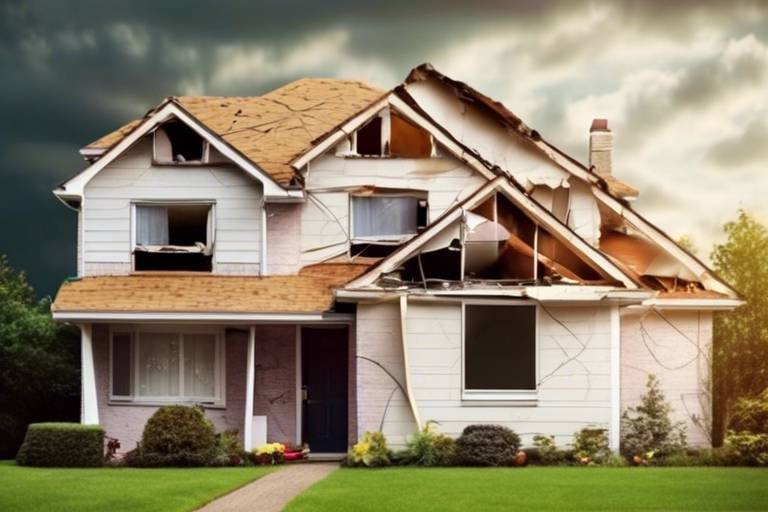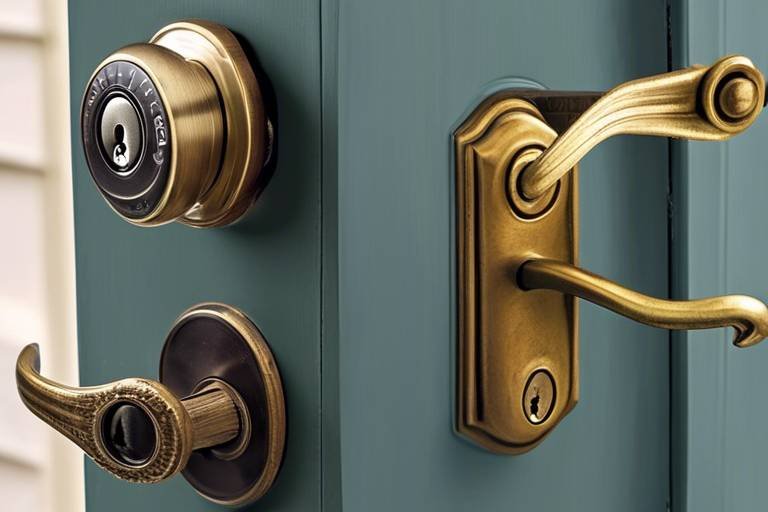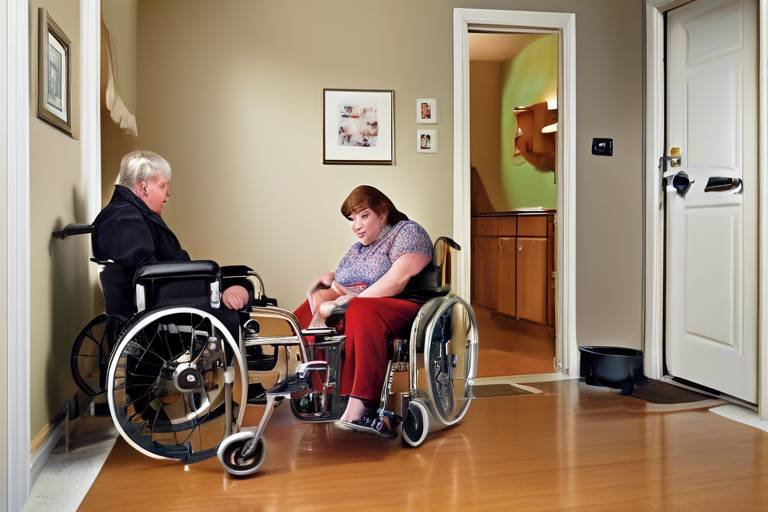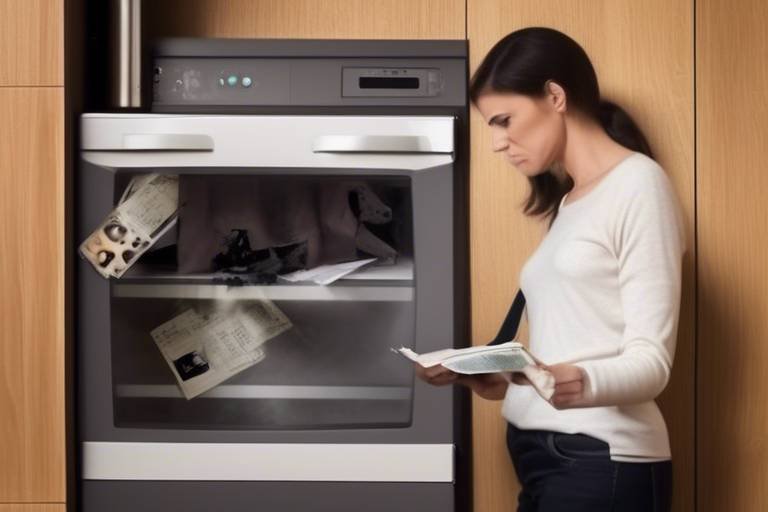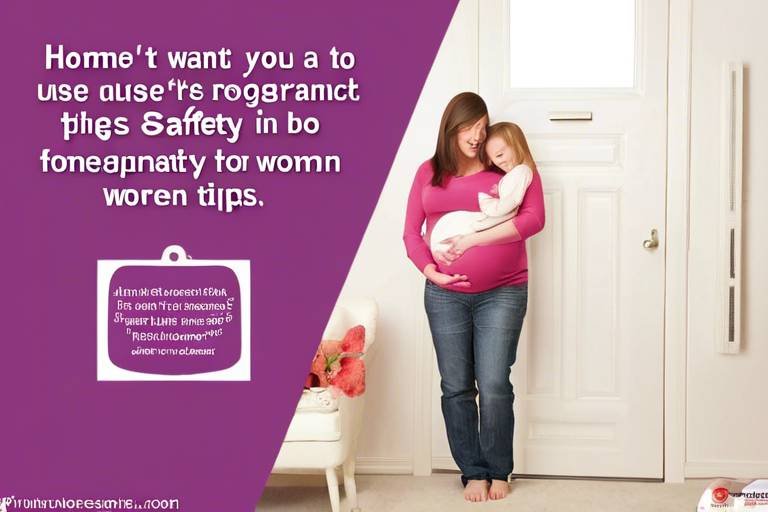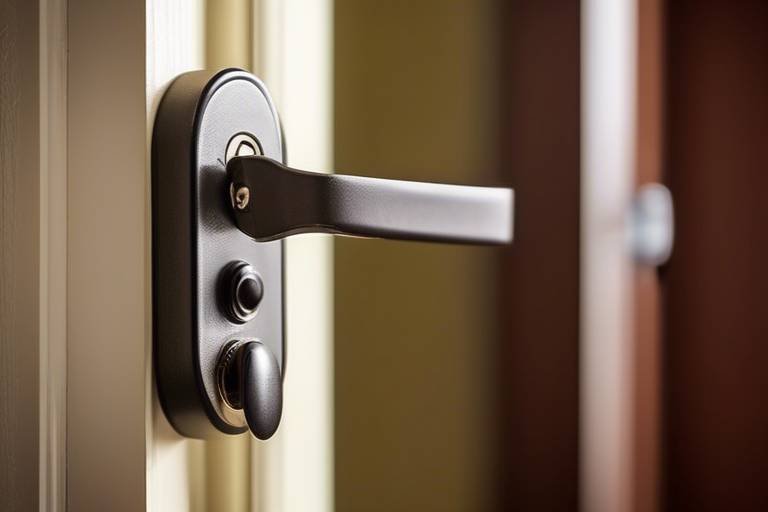The Role of Home Insurance in Safety
Home is more than just four walls; it's a sanctuary where memories are made, a space that reflects your personality, and a significant financial investment. But have you ever considered how vulnerable this precious space can be? From natural disasters to theft, numerous unforeseen events can threaten your home and belongings. This is where home insurance steps in like a superhero, providing a safety net that can save you from financial disaster. In this article, we will explore how home insurance contributes to safety, its importance, types, benefits, and tips for choosing the right policy to effectively protect your haven.
Home insurance is a vital financial product that protects homeowners from losses due to damage or theft. Think of it as a shield that guards your home against life's unexpected surprises. It provides peace of mind and security, ensuring that your investment is safeguarded against unforeseen events. Whether it's a burst pipe, a fire, or even a break-in, home insurance ensures you won't face these challenges alone. With the right policy, you can rest easy knowing that you have a plan in place to tackle whatever comes your way.
When it comes to home insurance, one size definitely does not fit all. There are various types of home insurance policies that cater to different needs, including HO-1, HO-2, HO-3, and HO-5. Understanding these options helps homeowners choose the best coverage for their specific circumstances. Each policy offers different levels of protection, so it's essential to know what suits your unique situation best.
The HO-1 policy offers minimal coverage, protecting against specific perils like fire and theft. While it's cost-effective, it may not provide sufficient protection for most homeowners, making it less popular. The limitations of this policy can leave you feeling exposed, especially if a significant event occurs. It's like wearing a raincoat on a sunny day—great for a light drizzle but not ideal for a downpour.
HO-1 policies often exclude many common risks, leaving homeowners vulnerable. For example, if you live in an area prone to flooding or earthquakes, an HO-1 policy won't cover those hazards. It's essential to evaluate these limitations before opting for this basic coverage to ensure adequate protection. Remember, the goal is to have a safety net that truly covers you, not just a thin layer of fabric.
HO-1 may suit those with limited assets or specific needs. However, most homeowners should explore more comprehensive options to ensure their property is fully protected against a broader range of risks. If you're just starting out and have minimal possessions, this might be an option, but as your life evolves, so should your coverage.
The HO-3 policy is the most common type of home insurance, offering broad coverage for the structure and personal belongings against numerous risks. This is the go-to choice for many homeowners because it covers a wide array of potential damages while also protecting you from liability claims. Think of it as a robust security system that keeps your home safe from intruders and natural disasters alike.
So, why should you invest in home insurance? The answer is simple: financial security. Home insurance provides a safety net, protecting against loss or damage. This coverage is especially crucial in times of crisis, offering you support when you need it the most. Additionally, it also offers liability coverage, ensuring homeowners are safeguarded against legal claims related to accidents occurring on their property. It's like having a financial guardian angel watching over you.
In the event of a disaster, home insurance can cover repair costs, replacements, and temporary living expenses. Imagine coming home to find your house has suffered severe water damage. Without insurance, you could face significant repair bills that might leave you financially crippled. Home insurance prevents homeowners from facing such burdens during challenging times, allowing you to focus on recovery rather than financial strain.
Liability coverage in home insurance protects homeowners from lawsuits arising from injuries or damages occurring on their property. Imagine a guest slips and falls in your living room. Without liability coverage, you could be facing a hefty lawsuit. This essential financial support provides peace of mind in potential legal disputes, ensuring that you can enjoy your home without the constant worry of what might go wrong.
Selecting the right home insurance policy requires careful consideration of coverage options, deductibles, and premiums. It's not just about picking a policy off the shelf; it's about finding the perfect fit for your unique lifestyle and budget. Homeowners should assess their needs and financial situation to find the best coverage that meets their specific requirements.
Evaluating personal belongings, home value, and potential risks is crucial when determining the appropriate coverage amount. This assessment ensures homeowners are adequately protected against various potential losses. Think of it as a puzzle; each piece represents a different aspect of your life that needs protection. Make sure all pieces fit perfectly to create a comprehensive picture of safety.
Obtaining multiple quotes from different insurance providers allows homeowners to compare coverage options and prices. This is essential for ensuring you receive the best value for your home insurance policy. It's like shopping for a new car; you wouldn't buy the first one you see without checking out other options, right? Similarly, take your time to find the best insurance deal that meets your needs.
- What does home insurance typically cover? Home insurance usually covers damage to the structure, personal belongings, and liability protection.
- Is home insurance mandatory? While it's not legally required, most mortgage lenders will require it to protect their investment.
- How can I lower my home insurance premium? You can lower your premium by increasing your deductible, bundling policies, or improving home security.
- What should I do if I need to file a claim? Contact your insurance provider immediately, document the damage, and provide any necessary information to process your claim.

Understanding Home Insurance
This article explores how home insurance contributes to safety, covering its importance, types, benefits, and tips for choosing the right policy to protect your home and belongings effectively.
Home insurance is not just a safety net; it's a protective shield for your most valuable asset—your home. Imagine coming home after a long day to find that a burst pipe has flooded your living room or that a fire has ravaged your kitchen. The thought alone is enough to send chills down your spine! But with the right home insurance policy, you can breathe a little easier knowing that you're financially protected against such unforeseen disasters.
At its core, home insurance is a financial product designed to safeguard homeowners from losses due to damage or theft. It covers a range of perils, from natural disasters like hurricanes and earthquakes to man-made issues like vandalism and theft. This means that while you can't predict the future, you can certainly prepare for it. Home insurance provides crucial peace of mind, ensuring that your investment is secured against unexpected events that could otherwise lead to significant financial strain.
Furthermore, home insurance often includes liability coverage, which protects you if someone is injured on your property. This aspect of coverage is essential, as legal fees and medical expenses can quickly add up, leaving you in a precarious financial situation. In essence, home insurance is not just about protecting your physical property; it's about securing your financial future and providing a safety net for you and your family.
When considering home insurance, it’s important to understand that policies can vary widely in terms of coverage and costs. Homeowners should take the time to evaluate their specific needs, including the value of their home and belongings, to ensure they select a policy that offers adequate protection. After all, the right coverage can mean the difference between bouncing back quickly after a disaster and facing financial hardship.
In summary, home insurance is a vital component of homeownership, providing not only financial protection but also peace of mind. It allows homeowners to navigate life’s uncertainties with confidence, knowing that they have a safety net in place should the unexpected occur.
Various types of home insurance policies cater to different needs, including HO-1, HO-2, HO-3, and HO-5. Understanding these options helps homeowners choose the best coverage for their specific circumstances.
The HO-1 policy offers minimal coverage, protecting against specific perils like fire and theft. While it's cost-effective, it may not provide sufficient protection for most homeowners, making it less popular.
HO-1 policies often exclude many common risks, leaving homeowners vulnerable. It's essential to evaluate these limitations before opting for this basic coverage to ensure adequate protection.
HO-1 may suit those with limited assets or specific needs. However, most homeowners should explore more comprehensive options to ensure their property is fully protected against a broader range of risks.
The HO-3 policy is the most common type of home insurance, offering broad coverage for the structure and personal belongings against numerous risks, making it a preferred choice for many homeowners.
Home insurance provides financial security, protecting against loss or damage. It also offers liability coverage, ensuring homeowners are safeguarded against legal claims related to accidents occurring on their property.
In the event of a disaster, home insurance can cover repair costs, replacements, and temporary living expenses, preventing homeowners from facing significant financial burdens during challenging times.
Liability coverage in home insurance protects homeowners from lawsuits arising from injuries or damages occurring on their property, offering essential financial support and peace of mind in potential legal disputes.
Selecting the right home insurance policy requires careful consideration of coverage options, deductibles, and premiums. Homeowners should assess their unique needs and budget to find the best fit for their situation.
Evaluating personal belongings, home value, and potential risks is crucial when determining the appropriate coverage amount. This assessment ensures homeowners are adequately protected against various potential losses.
Obtaining multiple quotes from different insurance providers allows homeowners to compare coverage options and prices, ensuring they receive the best value for their home insurance policy.
- What does home insurance typically cover? Home insurance generally covers damage to the structure of your home, personal belongings, and liability for injuries occurring on your property.
- How can I lower my home insurance premium? You can lower your premium by increasing your deductible, bundling policies, or improving home security features.
- Is home insurance mandatory? While not legally required, most mortgage lenders require homeowners to have insurance to protect their investment.

Types of Home Insurance Policies
When it comes to safeguarding your home, understanding the various types of home insurance policies is crucial. Each policy serves a different purpose and offers distinct levels of coverage, tailored to meet the diverse needs of homeowners. Let’s dive into some of the most common types of home insurance policies to help you make an informed decision.
The most prevalent types of home insurance policies include HO-1, HO-2, HO-3, and HO-5. Each of these policies provides different levels of protection, and knowing what they cover can be the key to ensuring your home is adequately protected. For instance, the HO-1 policy is often viewed as the most basic form of coverage, providing a limited safety net against certain perils. In contrast, the HO-3 policy is widely regarded as the gold standard for homeowners, offering extensive coverage for both the dwelling and personal property, protecting against a broad range of risks.
To give you a clearer picture, here’s a brief overview of these policies:
| Policy Type | Coverage Level | Common Perils Covered |
|---|---|---|
| HO-1 | Basic | Fire, Theft, Vandalism |
| HO-2 | Broad | All HO-1 perils + Additional Risks |
| HO-3 | Comprehensive | All Risks Except Exclusions |
| HO-5 | Premium | All Risks + Higher Personal Property Coverage |
As you can see, the HO-2 policy expands on the basic coverage provided by HO-1, including additional risks that homeowners frequently encounter. Meanwhile, the HO-5 policy takes it a step further, offering premium coverage for both the home and personal belongings, making it ideal for those with valuable items. Understanding these distinctions is essential when selecting a policy that aligns with your specific needs.
In summary, choosing the right home insurance policy is not a one-size-fits-all situation. It requires careful consideration of your home’s value, the contents within it, and the unique risks you may face based on your location. By assessing these factors and understanding the types of policies available, you can make an informed decision that provides the safety and security you deserve.

HO-1: Basic Coverage
This article explores how home insurance contributes to safety, covering its importance, types, benefits, and tips for choosing the right policy to protect your home and belongings effectively.
Home insurance is a vital financial product that protects homeowners from losses due to damage or theft. It provides peace of mind and security, ensuring that your investment is safeguarded against unforeseen events.
Various types of home insurance policies cater to different needs, including HO-1, HO-2, HO-3, and HO-5. Understanding these options helps homeowners choose the best coverage for their specific circumstances.
The HO-1 policy offers minimal coverage, protecting against specific perils like fire and theft. While it may seem like a budget-friendly option for homeowners, it often falls short in providing comprehensive protection. This type of policy is designed to cover only a limited number of risks, leaving many homeowners exposed to potential financial losses. For instance, if your home suffers from water damage or vandalism, an HO-1 policy typically won't cover those incidents, which can lead to significant out-of-pocket expenses.
Here are some key points to consider regarding the HO-1 policy:
- Basic Protection: Covers specific perils such as fire, theft, and vandalism.
- Cost-Effective: Generally lower premiums compared to more comprehensive policies.
- Limited Scope: Excludes many common risks, which can leave homeowners vulnerable.
While the HO-1 policy may suit individuals with limited assets or specific needs, it is crucial for most homeowners to assess their unique circumstances before settling on this basic coverage. The limitations of the HO-1 policy can lead to unexpected financial burdens, especially if a significant loss occurs. Therefore, homeowners should carefully evaluate their needs and consider whether a more comprehensive policy, such as the HO-3, might be a better fit.
One of the most significant drawbacks of the HO-1 policy is its limited coverage. Many homeowners may not realize that it excludes numerous risks that could affect their property. For example, natural disasters like floods or earthquakes are typically not covered under this policy. As a result, homeowners might find themselves facing substantial repair costs without any financial assistance from their insurance provider. It's essential to evaluate these limitations before opting for this basic coverage to ensure adequate protection.
HO-1 may suit those with limited assets or specific needs, such as renters or individuals living in less risky areas. However, for the majority of homeowners, it is advisable to explore more comprehensive options to ensure their property is fully protected against a broader range of risks. If you're considering an HO-1 policy, ask yourself: Are you comfortable taking on the risk of potential losses that may not be covered? If the answer is no, it might be time to look into more extensive coverage options.
Home insurance provides financial security, protecting against loss or damage. It also offers liability coverage, ensuring homeowners are safeguarded against legal claims related to accidents occurring on their property.
In the event of a disaster, home insurance can cover repair costs, replacements, and temporary living expenses, preventing homeowners from facing significant financial burdens during challenging times.
Liability coverage in home insurance protects homeowners from lawsuits arising from injuries or damages occurring on their property, offering essential financial support and peace of mind in potential legal disputes.
Selecting the right home insurance policy requires careful consideration of coverage options, deductibles, and premiums. Homeowners should assess their unique needs and budget to find the best fit for their situation.
Evaluating personal belongings, home value, and potential risks is crucial when determining the appropriate coverage amount. This assessment ensures homeowners are adequately protected against various potential losses.
Obtaining multiple quotes from different insurance providers allows homeowners to compare coverage options and prices, ensuring they receive the best value for their home insurance policy.
1. What does HO-1 cover?
The HO-1 policy covers specific perils such as fire, theft, and vandalism but excludes many common risks.
2. Is HO-1 suitable for all homeowners?
No, HO-1 is generally not recommended for most homeowners due to its limited coverage. It's better suited for those with minimal assets.
3. What are the advantages of HO-3 over HO-1?
HO-3 offers broader coverage for both the structure and personal belongings against numerous risks, making it a more comprehensive option.
4. How can I determine the right amount of coverage?
Assess your personal belongings, the value of your home, and potential risks in your area to determine the appropriate coverage amount.
5. Should I compare quotes from multiple insurance providers?
Yes, comparing quotes helps ensure you find the best coverage options and premiums for your home insurance policy.

Limitations of HO-1
The HO-1 policy, while appealing due to its cost-effectiveness, comes with significant limitations that homeowners should carefully consider before making a decision. This basic coverage typically protects against a limited number of perils, which can leave homeowners vulnerable to a variety of risks. For instance, while it may cover damages from fire and theft, it often excludes critical threats such as flooding, earthquakes, and vandalism. This narrow scope means that if a disaster strikes, homeowners could face substantial out-of-pocket expenses that the policy won’t cover.
To illustrate the limitations of the HO-1 policy, consider the following common perils that are generally excluded:
- Flooding
- Earthquakes
- Windstorms
- Vandalism
- Personal liability claims
Moreover, the HO-1 policy does not provide coverage for personal property outside the home, which can be a significant drawback for those who frequently travel or own valuable items that may be lost or damaged off-site. Homeowners should also be aware that the limited nature of this policy can lead to higher costs in the long run, as they may need to purchase additional coverage or endorsements to fill the gaps left by the basic policy.
In summary, while the HO-1 policy may seem like an attractive option for those looking to save money, its limitations can lead to inadequate protection and potential financial strain in the event of an unforeseen incident. Homeowners are encouraged to evaluate their needs thoroughly and consider more comprehensive options that provide broader coverage and peace of mind.
- What is the main advantage of an HO-1 policy? The primary advantage of an HO-1 policy is its affordability, making it accessible for those with limited budgets.
- Who should consider an HO-1 policy? An HO-1 policy may be suitable for individuals with minimal assets or those living in low-risk areas, but most homeowners should look for more comprehensive coverage.
- What additional coverage might I need? Homeowners may need to consider additional policies or endorsements for risks like flooding or personal liability to ensure full protection.
- How can I determine if HO-1 is right for me? Assess your property value, personal belongings, and potential risks to decide if the limited coverage of an HO-1 policy meets your needs.
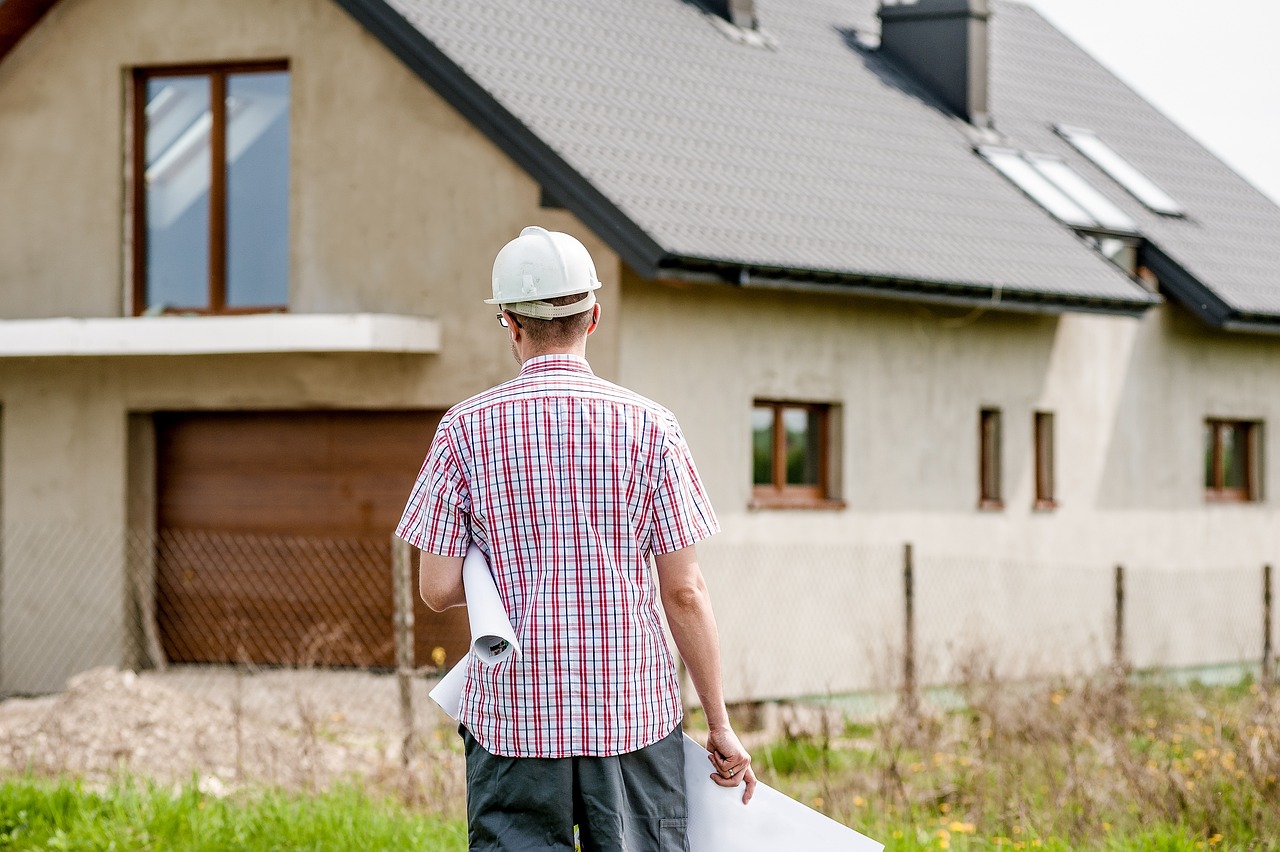
Who Should Consider HO-1?
The HO-1 policy, while not the most popular option, can be a suitable choice for certain homeowners. If you find yourself in a situation where your assets are limited and you’re looking for a budget-friendly insurance solution, then the HO-1 might just fit the bill. It’s like choosing a basic car insurance policy when you own an older vehicle; it covers the essentials without breaking the bank.
However, it’s crucial to assess whether this minimal coverage aligns with your specific needs. For instance, if you live in an area prone to natural disasters, such as floods or earthquakes, the HO-1 may leave you exposed because it typically only covers a few basic perils, such as fire and theft. Think of it as having a raincoat but no umbrella; it might protect you from some rain, but not all the elements.
In essence, the HO-1 policy may be more appealing to:
- Renters: If you’re renting a property and only need to cover your personal belongings, the HO-1 can be a cost-effective choice.
- Minimalists: Homeowners with fewer possessions or those who are just starting out may find that the basic coverage meets their needs without unnecessary expenses.
- Older Homes: If you own an older home that has limited value, the HO-1 might provide sufficient protection against the most common risks without over-insuring.
Ultimately, while the HO-1 policy can cater to specific scenarios, most homeowners should consider exploring more comprehensive options. It’s essential to weigh the benefits against your unique circumstances to ensure that you are not left vulnerable to unforeseen risks. After all, your home is not just a structure; it’s a sanctuary filled with memories, and protecting it should be a priority.
1. What does an HO-1 policy cover?
An HO-1 policy typically covers basic perils such as fire, theft, and vandalism. However, it does not include coverage for many common risks, which is why it’s considered a minimal option.
2. Is HO-1 suitable for everyone?
No, HO-1 is not suitable for everyone. It’s best for those with limited assets or specific needs. Most homeowners should explore more comprehensive policies for better protection.
3. Can I upgrade from HO-1 to a more comprehensive policy later?
Yes, you can usually upgrade your home insurance policy at any time. It’s advisable to assess your coverage regularly to ensure it meets your evolving needs.
4. How do I know if I need more coverage?
Consider your home’s value, the contents within it, and the risks associated with your location. If you feel exposed to potential losses that an HO-1 policy wouldn’t cover, it’s time to look for more comprehensive options.

HO-3: Comprehensive Coverage
The HO-3 policy is often hailed as the gold standard in home insurance, offering a robust shield against a plethora of risks that homeowners may face. Think of it as your home's personal bodyguard, ready to step in when the unexpected occurs. This policy covers not only the physical structure of your home but also your personal belongings, ensuring that you are protected from a wide range of potential disasters. From fire and theft to vandalism and natural disasters, the HO-3 policy has you covered, making it a popular choice among homeowners.
One of the standout features of the HO-3 policy is its all-risk coverage for the dwelling, which means it covers everything except for the specific exclusions listed in the policy. This is a significant advantage over more basic policies, which only cover named perils. Here’s a quick breakdown of what you can typically expect from an HO-3 policy:
| Coverage Type | Description |
|---|---|
| Dwelling Coverage | Covers the structure of your home against most risks. |
| Personal Property Coverage | Protects your personal belongings like furniture and electronics. |
| Liability Coverage | Offers protection against lawsuits for injuries or damages occurring on your property. |
| Additional Living Expenses | Covers costs incurred if you need to live elsewhere while your home is being repaired. |
Choosing an HO-3 policy not only provides extensive coverage but also offers peace of mind knowing that your investment is well-protected. However, it’s essential to read the policy details carefully, as exclusions can vary. Common exclusions might include flood damage, earthquake damage, and wear and tear. Therefore, if you live in an area prone to such events, you might need to consider additional coverage options.
Moreover, while the HO-3 policy is comprehensive, it’s vital to regularly review your coverage limits and make adjustments as necessary. As your life changes—whether it’s acquiring new valuables, renovating your home, or experiencing fluctuations in property value—your insurance should evolve accordingly. This proactive approach ensures that you are not underinsured in the event of a claim.
In summary, the HO-3 policy is an excellent choice for homeowners seeking comprehensive protection. It combines extensive coverage with flexibility, allowing you to tailor your policy to fit your unique needs. Just remember, with great coverage comes great responsibility—so take the time to understand your policy thoroughly and keep it updated!
- What is the difference between HO-1, HO-2, and HO-3 policies?
HO-1 and HO-2 offer limited coverage for specific perils, while HO-3 provides broader, all-risk coverage for the dwelling and personal belongings. - Are natural disasters covered under an HO-3 policy?
While HO-3 policies cover many risks, natural disasters like floods and earthquakes often require separate coverage. - How can I adjust my coverage limits?
You can adjust your coverage limits by contacting your insurance provider and discussing your current needs and property value.
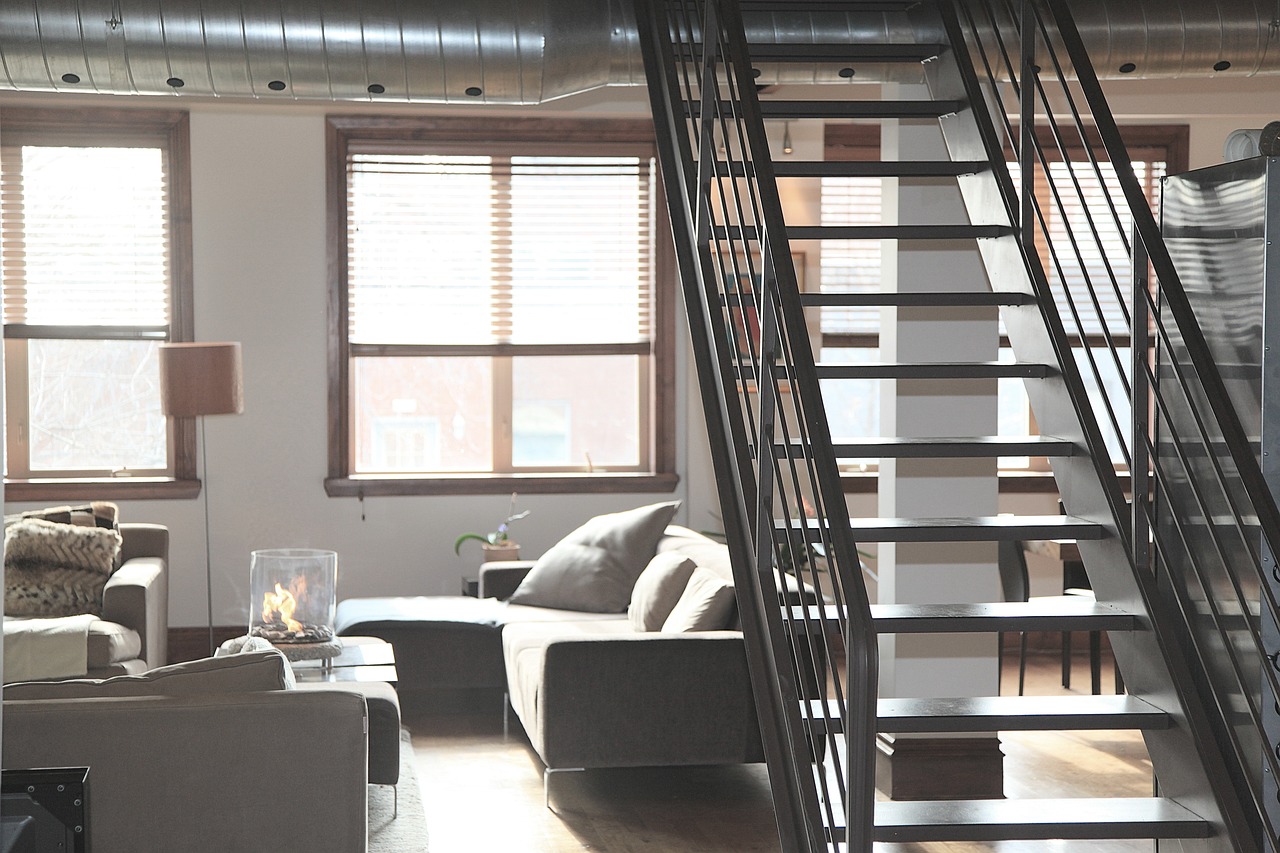
Benefits of Home Insurance
This article explores how home insurance contributes to safety, covering its importance, types, benefits, and tips for choosing the right policy to protect your home and belongings effectively.
Home insurance is a vital financial product that protects homeowners from losses due to damage or theft. It provides peace of mind and security, ensuring that your investment is safeguarded against unforeseen events.
Various types of home insurance policies cater to different needs, including HO-1, HO-2, HO-3, and HO-5. Understanding these options helps homeowners choose the best coverage for their specific circumstances.
The HO-1 policy offers minimal coverage, protecting against specific perils like fire and theft. While it's cost-effective, it may not provide sufficient protection for most homeowners, making it less popular.
HO-1 policies often exclude many common risks, leaving homeowners vulnerable. It's essential to evaluate these limitations before opting for this basic coverage to ensure adequate protection.
HO-1 may suit those with limited assets or specific needs. However, most homeowners should explore more comprehensive options to ensure their property is fully protected against a broader range of risks.
The HO-3 policy is the most common type of home insurance, offering broad coverage for the structure and personal belongings against numerous risks, making it a preferred choice for many homeowners.
Home insurance provides financial security, protecting against loss or damage. In a world where unexpected events can turn our lives upside down, having a safety net in the form of home insurance is not just wise; it's essential. Imagine waking up to find your home damaged by a storm or a fire. Without insurance, the financial burden can be overwhelming. Home insurance steps in to cover repair costs, replacements, and even temporary living expenses, allowing you to focus on recovery rather than financial strain.
Moreover, home insurance includes liability coverage, which is crucial for safeguarding homeowners against legal claims. Picture this: a guest slips and falls on your property and decides to sue. Liability coverage ensures that you're not left to fend for yourself in court, covering legal fees and potential settlements. This aspect of home insurance is often overlooked, yet it plays a significant role in providing peace of mind.
To summarize, the key benefits of home insurance can be highlighted as follows:
- Financial Protection: Covers repair costs and losses from disasters.
- Liability Coverage: Protects against legal claims from accidents on your property.
- Peace of Mind: Knowing you’re covered allows you to live without constant worry.
In essence, home insurance is not just a policy; it's a shield that protects your home and your financial well-being. It allows homeowners to navigate the uncertainties of life with confidence, knowing that they have a safety net to fall back on.
Selecting the right home insurance policy requires careful consideration of coverage options, deductibles, and premiums. Homeowners should assess their unique needs and budget to find the best fit for their situation.
Evaluating personal belongings, home value, and potential risks is crucial when determining the appropriate coverage amount. This assessment ensures homeowners are adequately protected against various potential losses.
Obtaining multiple quotes from different insurance providers allows homeowners to compare coverage options and prices, ensuring they receive the best value for their home insurance policy.
Home insurance generally covers damage to the home structure, personal belongings, and liability for accidents that occur on your property. Specific coverage can vary by policy.
While landlords often have insurance for the property, renters should consider renter's insurance to protect their personal belongings against theft or damage.
You can lower your premium by increasing your deductible, bundling policies, maintaining a good credit score, and implementing safety features like security systems.

Financial Protection
This article explores how home insurance contributes to safety, covering its importance, types, benefits, and tips for choosing the right policy to protect your home and belongings effectively.
Home insurance is a vital financial product that protects homeowners from losses due to damage or theft. It provides peace of mind and security, ensuring that your investment is safeguarded against unforeseen events.
Various types of home insurance policies cater to different needs, including HO-1, HO-2, HO-3, and HO-5. Understanding these options helps homeowners choose the best coverage for their specific circumstances.
The HO-1 policy offers minimal coverage, protecting against specific perils like fire and theft. While it's cost-effective, it may not provide sufficient protection for most homeowners, making it less popular.
HO-1 policies often exclude many common risks, leaving homeowners vulnerable. It's essential to evaluate these limitations before opting for this basic coverage to ensure adequate protection.
HO-1 may suit those with limited assets or specific needs. However, most homeowners should explore more comprehensive options to ensure their property is fully protected against a broader range of risks.
The HO-3 policy is the most common type of home insurance, offering broad coverage for the structure and personal belongings against numerous risks, making it a preferred choice for many homeowners.
Home insurance provides financial security, protecting against loss or damage. It also offers liability coverage, ensuring homeowners are safeguarded against legal claims related to accidents occurring on their property.
In the event of a disaster, home insurance plays a crucial role in providing for homeowners. Imagine waking up one morning to find your home damaged by a fire or a severe storm. The thought alone is terrifying, but the financial implications can be equally daunting. Home insurance steps in to cover various costs, including:
- Repair Costs: Whether it's fixing a leaky roof or rebuilding a section of your home, insurance can cover significant repair expenses.
- Replacement Costs: If your belongings are damaged or destroyed, your policy can help replace them, ensuring you don't start from scratch.
- Temporary Living Expenses: If your home is uninhabitable during repairs, your insurance may cover the costs of temporary housing, relieving you of additional financial stress.
Moreover, having home insurance is like having a safety net. It protects you from the unexpected financial burdens that can arise during challenging times. Without it, homeowners might face crippling debt or even bankruptcy. Think of it as a shield that guards your financial well-being, allowing you to focus on recovery rather than worry about how to pay for repairs or replacements.
Selecting the right home insurance policy requires careful consideration of coverage options, deductibles, and premiums. Homeowners should assess their unique needs and budget to find the best fit for their situation.
Evaluating personal belongings, home value, and potential risks is crucial when determining the appropriate coverage amount. This assessment ensures homeowners are adequately protected against various potential losses.
Obtaining multiple quotes from different insurance providers allows homeowners to compare coverage options and prices, ensuring they receive the best value for their home insurance policy.
Home insurance is a type of property insurance that covers losses and damages to an individual's home and assets in the home. It provides financial protection against various risks, including theft, fire, and natural disasters.
While landlords typically have insurance for the building, renters should consider obtaining renters insurance to protect their personal belongings and provide liability coverage.
You can lower your home insurance premium by increasing your deductible, bundling policies, maintaining a good credit score, and installing safety features like smoke detectors or security systems.
If you need to file a claim, contact your insurance provider as soon as possible, document the damage, and provide any necessary information. They will guide you through the claims process.

Liability Coverage
This article explores how home insurance contributes to safety, covering its importance, types, benefits, and tips for choosing the right policy to protect your home and belongings effectively.
Home insurance is a vital financial product that protects homeowners from losses due to damage or theft. It provides peace of mind and security, ensuring that your investment is safeguarded against unforeseen events.
Various types of home insurance policies cater to different needs, including HO-1, HO-2, HO-3, and HO-5. Understanding these options helps homeowners choose the best coverage for their specific circumstances.
The HO-1 policy offers minimal coverage, protecting against specific perils like fire and theft. While it's cost-effective, it may not provide sufficient protection for most homeowners, making it less popular.
HO-1 policies often exclude many common risks, leaving homeowners vulnerable. It's essential to evaluate these limitations before opting for this basic coverage to ensure adequate protection.
HO-1 may suit those with limited assets or specific needs. However, most homeowners should explore more comprehensive options to ensure their property is fully protected against a broader range of risks.
The HO-3 policy is the most common type of home insurance, offering broad coverage for the structure and personal belongings against numerous risks, making it a preferred choice for many homeowners.
Home insurance provides financial security, protecting against loss or damage. It also offers liability coverage, ensuring homeowners are safeguarded against legal claims related to accidents occurring on their property.
In the event of a disaster, home insurance can cover repair costs, replacements, and temporary living expenses, preventing homeowners from facing significant financial burdens during challenging times.
in home insurance is a crucial component that protects homeowners from lawsuits arising from injuries or damages occurring on their property. Imagine having a friend over for a barbecue, and they accidentally slip and fall on your wet patio. Without proper liability coverage, you could be facing hefty medical bills and legal fees that could easily spiral out of control. This type of coverage not only offers essential financial support but also provides peace of mind in potential legal disputes.
Liability coverage typically includes:
- Medical expenses for injured guests
- Legal fees associated with defending against lawsuits
- Settlement costs if you are found liable
Most standard home insurance policies include a liability limit, which is the maximum amount the insurer will pay for covered claims. Homeowners should assess their needs and consider increasing this limit if they frequently host gatherings or have a higher risk of accidents on their property. Additionally, some policies offer umbrella coverage, which provides extra protection beyond standard liability limits, making it an excellent option for those seeking additional peace of mind.
Selecting the right home insurance policy requires careful consideration of coverage options, deductibles, and premiums. Homeowners should assess their unique needs and budget to find the best fit for their situation.
Evaluating personal belongings, home value, and potential risks is crucial when determining the appropriate coverage amount. This assessment ensures homeowners are adequately protected against various potential losses.
Obtaining multiple quotes from different insurance providers allows homeowners to compare coverage options and prices, ensuring they receive the best value for their home insurance policy.
1. What does home insurance typically cover?
Home insurance generally covers the structure of your home, personal belongings, liability protection, and additional living expenses in case of a covered loss.
2. How much home insurance do I need?
The amount of home insurance you need depends on your home’s value, the value of your personal belongings, and your liability exposure. It's essential to assess these factors carefully.
3. Can I change my home insurance policy later?
Yes, you can change your home insurance policy at any time. It's advisable to review your coverage annually or after significant life changes, such as renovations or acquiring valuable items.

Choosing the Right Home Insurance
Choosing the right home insurance policy can feel like navigating a maze filled with various options, terms, and conditions. It's not just about picking a policy; it's about securing your sanctuary—the place where you create memories and find comfort. So, how do you sift through the noise and find the coverage that best suits your needs? First and foremost, you need to assess your unique situation. This includes evaluating the value of your home, the belongings you cherish, and the potential risks you face in your area. For example, if you live in a region prone to floods, you might want to consider additional flood insurance, as standard policies often don’t cover such events.
Next, understanding the different components of a home insurance policy is crucial. Policies typically include coverage for the structure of your home, personal property, liability, and additional living expenses in case you need to temporarily relocate. Each of these components serves a purpose, and knowing what you need will help you make an informed decision. For instance, if you have valuable items like art or collectibles, you might need to add a rider to your policy to ensure they’re fully protected.
Another essential step is to compare quotes from multiple insurance providers. This process not only helps you find the best price but also allows you to evaluate the coverage options offered by different companies. When you're comparing quotes, look beyond just the premiums; consider the deductibles and coverage limits as well. A lower premium might seem appealing, but if the deductible is high or the coverage is limited, you may end up paying more out of pocket in the long run.
It's also wise to read reviews and ratings of insurance companies. Customer service can make a significant difference, especially when you need to file a claim. A company with a stellar reputation for handling claims efficiently can save you a lot of stress during tough times. Additionally, don't hesitate to ask questions. Whether it's about specific coverage options or the claims process, getting clarity can help you avoid surprises down the road.
Lastly, consider consulting an insurance agent. They can provide valuable insights tailored to your specific needs and help you navigate the complexities of home insurance. Remember, this is not just a financial decision; it’s about protecting your home and everything in it. In the end, the right home insurance policy will give you peace of mind, allowing you to focus on what truly matters—enjoying your home!
- What factors affect my home insurance premium? Several factors influence your premium, including the location of your home, the age and condition of the property, your claims history, and the coverage options you choose.
- Do I need additional coverage for natural disasters? Yes, standard home insurance policies often do not cover certain natural disasters like floods or earthquakes, so you may need to purchase separate policies or endorsements.
- How can I lower my home insurance premium? You can lower your premium by increasing your deductible, bundling policies, maintaining a good credit score, and installing security features in your home.

Assessing Coverage Needs
When it comes to home insurance, one of the most crucial steps is assessing your coverage needs. This process can feel a bit overwhelming, but it’s essential for ensuring that you’re not underinsured or overpaying for your policy. Start by taking a good look at your home and belongings. How much would it cost to replace your furniture, electronics, and personal items? Consider creating an inventory list to help you gauge the total value of your possessions. This inventory should include:
- High-value items: Jewelry, art, and collectibles.
- Furniture: Couches, beds, and dining sets.
- Electronics: TVs, computers, and gaming consoles.
- Appliances: Refrigerators, washers, and dryers.
Next, think about the structure of your home. What would it cost to rebuild it if a disaster struck? This isn’t just about the market value; it’s about the cost of materials and labor in your area. You might be surprised to find that the amount you owe on your mortgage is not the same as the replacement cost. To assist in this process, many insurance companies offer calculators that can help estimate your home’s rebuilding cost.
Also, consider the potential risks specific to your location. Are you in an area prone to flooding, earthquakes, or wildfires? If so, you might need additional coverage beyond a standard policy. For example, flood insurance is often not included in standard home insurance, and you may need to purchase it separately. Understanding these risks can help you make informed decisions about the coverage you need.
Lastly, don't forget to evaluate your personal circumstances. Are there any lifestyle changes on the horizon, such as a new family member or a significant renovation? These changes could impact your insurance needs. Regularly reviewing and updating your coverage can save you from potential headaches down the line.
In summary, assessing your coverage needs is about taking a comprehensive look at your home, belongings, and potential risks. By doing so, you’ll ensure that you have the right amount of coverage, providing you with peace of mind and financial security in case of unexpected events.
- What is home insurance?
Home insurance is a type of property insurance that covers losses and damages to an individual's residence, along with the furnishings and other assets in the home. - How much coverage do I need?
The amount of coverage you need depends on the value of your home and personal belongings, as well as any additional risks associated with your location. - What types of home insurance policies are available?
There are several types of home insurance policies, including HO-1 (basic), HO-2 (broad), HO-3 (special form), and HO-5 (comprehensive). Each offers different levels of coverage. - How can I lower my home insurance premium?
You can lower your premium by increasing your deductible, bundling policies, improving home security, and maintaining a good credit score.
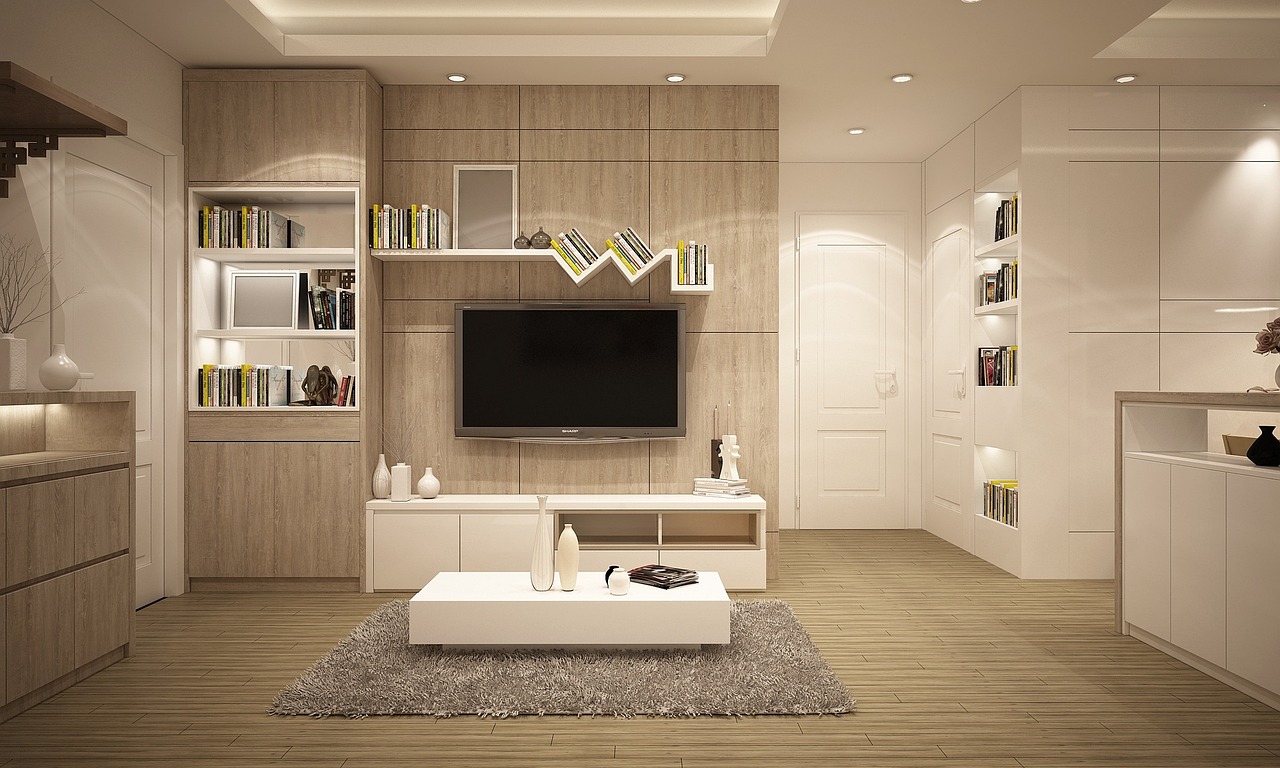
Comparing Quotes
This article explores how home insurance contributes to safety, covering its importance, types, benefits, and tips for choosing the right policy to protect your home and belongings effectively.
Home insurance is a vital financial product that protects homeowners from losses due to damage or theft. It provides peace of mind and security, ensuring that your investment is safeguarded against unforeseen events.
Various types of home insurance policies cater to different needs, including HO-1, HO-2, HO-3, and HO-5. Understanding these options helps homeowners choose the best coverage for their specific circumstances.
The HO-1 policy offers minimal coverage, protecting against specific perils like fire and theft. While it's cost-effective, it may not provide sufficient protection for most homeowners, making it less popular.
HO-1 policies often exclude many common risks, leaving homeowners vulnerable. It's essential to evaluate these limitations before opting for this basic coverage to ensure adequate protection.
HO-1 may suit those with limited assets or specific needs. However, most homeowners should explore more comprehensive options to ensure their property is fully protected against a broader range of risks.
The HO-3 policy is the most common type of home insurance, offering broad coverage for the structure and personal belongings against numerous risks, making it a preferred choice for many homeowners.
Home insurance provides financial security, protecting against loss or damage. It also offers liability coverage, ensuring homeowners are safeguarded against legal claims related to accidents occurring on their property.
In the event of a disaster, home insurance can cover repair costs, replacements, and temporary living expenses, preventing homeowners from facing significant financial burdens during challenging times.
Liability coverage in home insurance protects homeowners from lawsuits arising from injuries or damages occurring on their property, offering essential financial support and peace of mind in potential legal disputes.
Selecting the right home insurance policy requires careful consideration of coverage options, deductibles, and premiums. Homeowners should assess their unique needs and budget to find the best fit for their situation.
Evaluating personal belongings, home value, and potential risks is crucial when determining the appropriate coverage amount. This assessment ensures homeowners are adequately protected against various potential losses.
Comparing quotes is an essential step in selecting the right home insurance policy. It’s like shopping for a new car; you wouldn’t just pick the first one you see, right? You want to make sure you’re getting the best deal for your needs. Start by gathering quotes from multiple insurance providers. This allows you to see the differences in coverage options, deductibles, and premiums. But remember, it’s not just about the price; it’s about what you’re getting for that price.
When you receive quotes, pay attention to the details. Look for:
- Coverage Limits: Ensure the policy covers the full value of your home and belongings.
- Deductibles: Higher deductibles usually mean lower premiums, but make sure you can afford the deductible in case of a claim.
- Exclusions: Understand what is not covered by the policy to avoid surprises later.
To make this process easier, consider creating a comparison table to visualize the differences. Here’s a simple example:
| Insurance Provider | Coverage Amount | Premium | Deductible | Exclusions |
|---|---|---|---|---|
| Provider A | $300,000 | $1,200 | $1,000 | Flood, Earthquake |
| Provider B | $350,000 | $1,400 | $500 | Earthquake |
| Provider C | $300,000 | $1,100 | $1,000 | Flood |
By comparing these elements, you can make a more informed decision that aligns with your financial situation and coverage needs. Remember, the goal is to find a balance between affordability and comprehensive protection for your home.
Q: What is the average cost of home insurance?
A: The average cost varies significantly based on location, coverage amount, and the home’s value. On average, homeowners can expect to pay between $800 and $1,500 annually.
Q: Do I need home insurance if I rent?
A: Yes, renters insurance is important as it protects your personal belongings and provides liability coverage.
Q: Can I change my home insurance policy?
A: Absolutely! You can review and change your policy at any time, especially if your needs or circumstances change.
Frequently Asked Questions
- What is home insurance?
Home insurance is a financial product designed to protect homeowners from losses due to damage or theft. It provides coverage for your home and personal belongings, giving you peace of mind in case of unforeseen events.
- What types of home insurance policies are available?
There are several types of home insurance policies, including HO-1, HO-2, HO-3, and HO-5. Each policy offers different levels of coverage, so it's important to understand which one best suits your needs.
- What does an HO-1 policy cover?
An HO-1 policy provides basic coverage for specific perils, such as fire and theft. However, it is limited and may not cover many common risks, making it less suitable for most homeowners.
- Who should consider an HO-1 policy?
HO-1 policies may be appropriate for individuals with limited assets or specific needs. However, most homeowners are encouraged to look into more comprehensive options to ensure adequate protection.
- What is the most common type of home insurance?
The HO-3 policy is the most commonly purchased home insurance policy. It offers broad coverage for both the structure of your home and personal belongings against various risks.
- What are the benefits of having home insurance?
Home insurance provides financial security by covering repair costs, replacements, and temporary living expenses in the event of a disaster. It also includes liability coverage, protecting homeowners from legal claims related to accidents on their property.
- How can I choose the right home insurance policy?
Choosing the right home insurance policy involves assessing your coverage needs, comparing quotes from different providers, and considering your budget. Evaluating your personal belongings and potential risks is crucial in this process.
- Why is liability coverage important?
Liability coverage is essential because it protects homeowners from lawsuits arising from injuries or damages that occur on their property. This coverage provides financial support and peace of mind in potential legal disputes.

